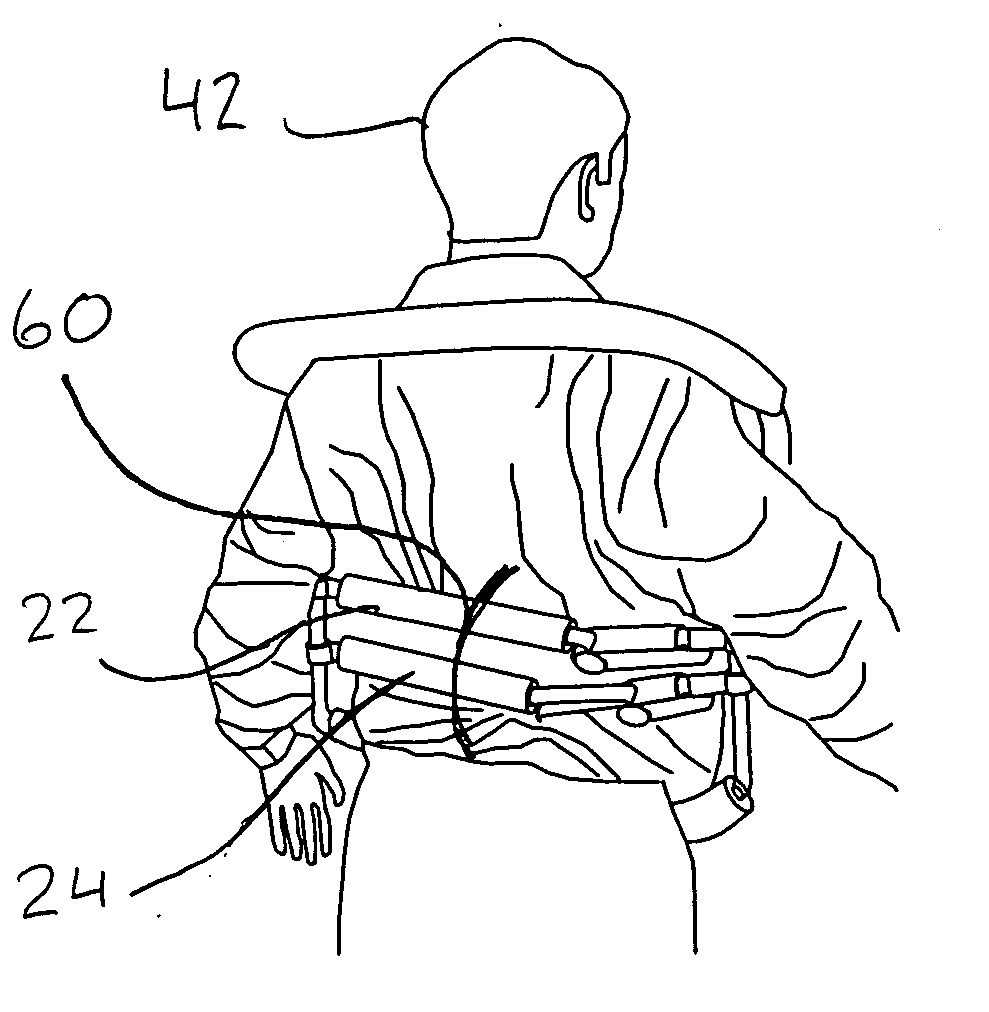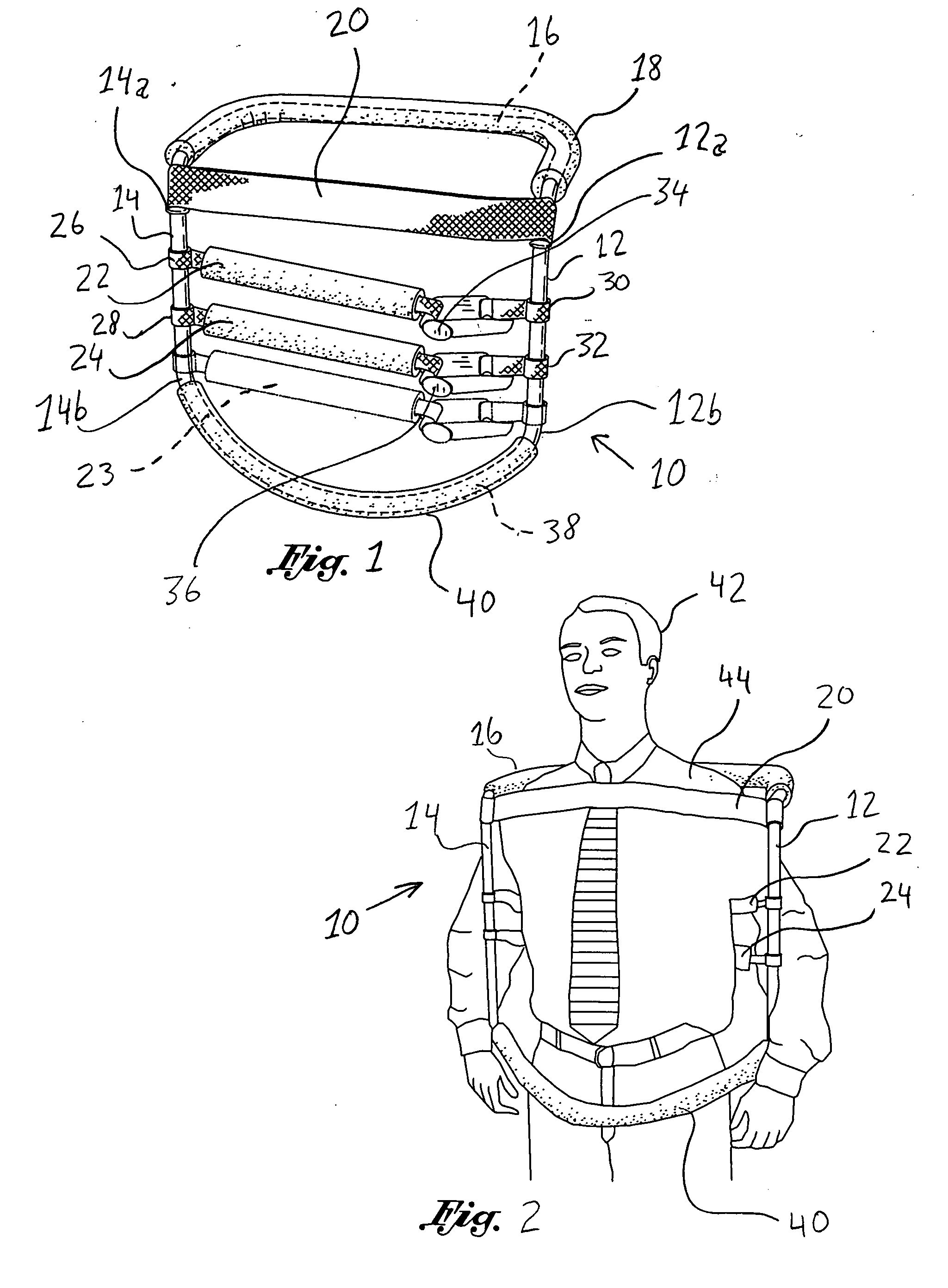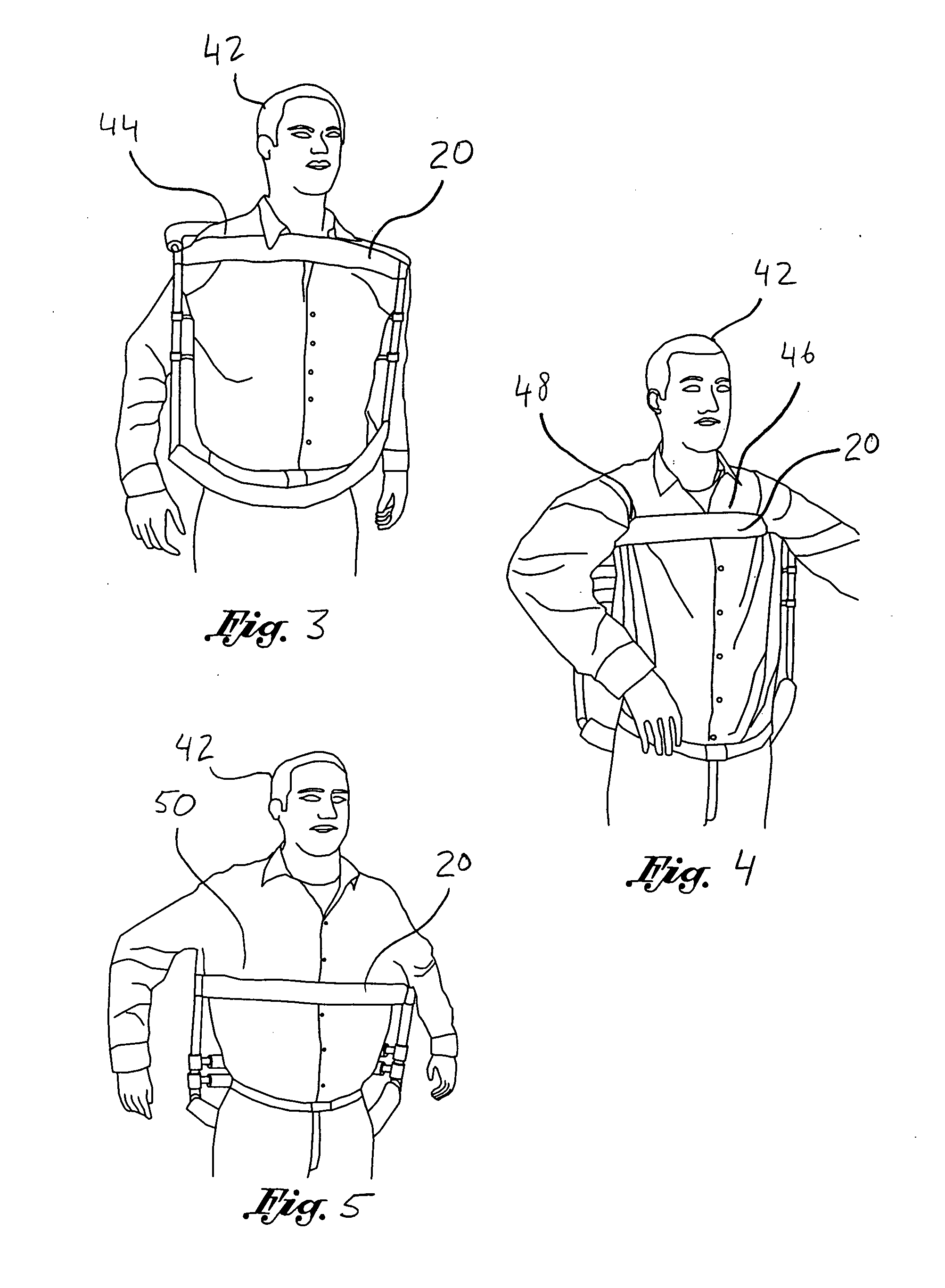Thoraco-lumbar spine support/brace
a spine support and lumbar spine technology, applied in the field of thoracic spine support/brace, can solve the problems of limited effectiveness, static application of traction force, limited ability to change the curvature of the lateral spine, etc., and achieve the effect of reducing or increasing thoracic kyphosis and rapid movemen
- Summary
- Abstract
- Description
- Claims
- Application Information
AI Technical Summary
Benefits of technology
Problems solved by technology
Method used
Image
Examples
Embodiment Construction
[0024] The detailed description set forth below is intended as a description of the presently preferred embodiment of the invention, and is not intended to represent the only form in which the present invention may be constructed or utilized. The description sets forth the functions and sequences of steps for constructing and operating the invention. It is to be understood, however, that the same or equivalent functions and sequences may be accomplished by different embodiments and that they are also intended to be encompassed within the scope of the invention.
[0025] Referring now to the Figures, initially to FIG. 1, there is shown a thoraco-lumbar spine support / brace 10 that is operative to correct lateral spinal alignment so that the same attains a desired physiological orientation. The support / brace 10 is further specifically configured to selectively apply translational traction forces at select portions upon a wearer's thoracic and lumbar vertebrae, as well as to selectively a...
PUM
 Login to View More
Login to View More Abstract
Description
Claims
Application Information
 Login to View More
Login to View More - R&D
- Intellectual Property
- Life Sciences
- Materials
- Tech Scout
- Unparalleled Data Quality
- Higher Quality Content
- 60% Fewer Hallucinations
Browse by: Latest US Patents, China's latest patents, Technical Efficacy Thesaurus, Application Domain, Technology Topic, Popular Technical Reports.
© 2025 PatSnap. All rights reserved.Legal|Privacy policy|Modern Slavery Act Transparency Statement|Sitemap|About US| Contact US: help@patsnap.com



